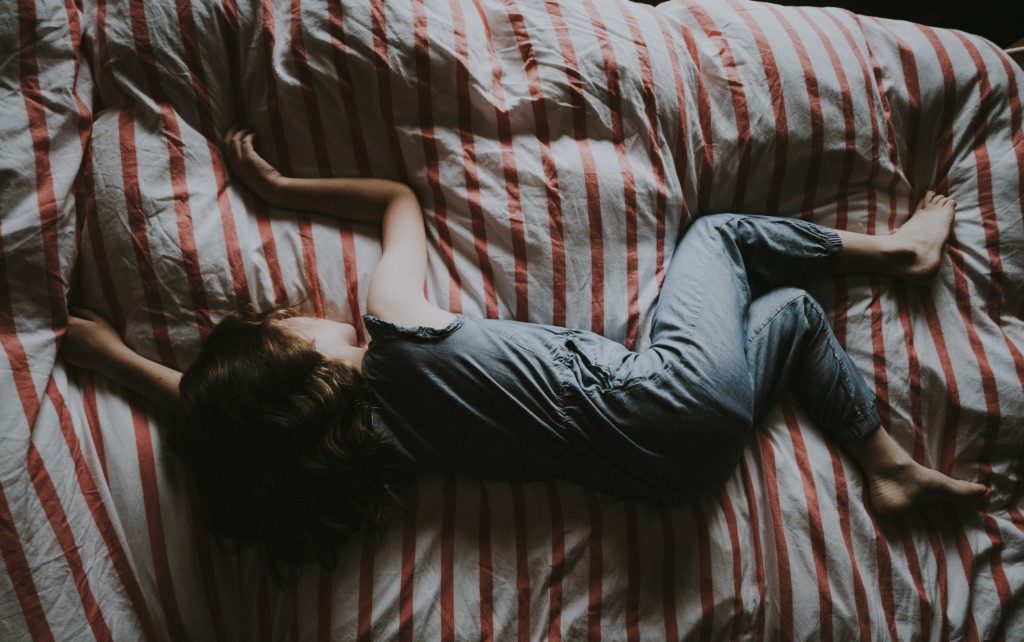When should bedwetting become a concern?
![]()

Bedwetting, or primary enuresis, refers to a child passing urine while sleeping, after never having any periods of consistent night time dryness. It is a complicated process and can be exhausting and demoralizing for children and their parents and caregivers. So what’s normal? And what can you do if you feel your child has a problem?
When babies are born, they have no control over the mechanisms that allow them to empty their bladders and bowels. As they grow, and with support from parents and caregivers, their systems develop so that between 18 months and 4 years, most typical children will gain control over their bladder and bowel movements during the day. Nighttime dryness can be a more complicated and slower process. It is considered normal for children to be still be wet at night until the age of 5 years, and up to that point parents should not be worried about it. Particularly, in the era of ‘pull up’ type nappies, it is best to shelve concerns until the child is at least over 5 years.
The most important thing to keep in mind, is that there are physiological changes that occur in children at different ages. 50% of 3 year olds will become dry at night spontaneously, however 20% or 4 year olds and 15% of 5 year olds will still be wet at night without there being any ‘problem.’ The difference is a slower rate of development of the mechanisms that control urine production and bladder control when sleeping. These children are typically ‘deep sleepers’ and not as easy to rouse. In addition their body often produces more urine at night due to slower development of hormonal centres in the brain. It often runs in families, is more common in boys and it almost always resolves in time.
After 5 years, parents can start trying some simple interventions to encourage night time dryness in children. It is important to exclude constipation. Constipated children often struggle with bladder control. This is the first consideration. Secondly, children will often not drink at kindy or school and then feel the need for hydration in the afternoon and evening. A child between 4 – 8 years should be drinking between 1 to 1.4 litres of fluid over the course of a day. They should be going to the toilet 4 to 7 times over the day at regular intervals. They should empty their bladder just before going off to sleep. With these simple interventions some ground is likely to be made into the volume and frequency of nighttime wetness. Reward charts for compliance with these behaviours are entirely appropriate and their efforts should be celebrated, regardless of the outcome.
There are a number of techniques which have been recommended for many years, that might result in a dry bed but do not usually help establish long term bladder control. There are also some techniques that are possibly going to cause unintended harm and should be avoided.
Techniques that are not shown to be helpful long-term and can cause harm are:
- Restricting fluids. Fluid intake across the day should be balanced but not restricted unless the volume the child is drinking is particularly large.
- Lifting – this involves lifting sleeping children from bed and encouraging them to pass urine into the toilet a couple hours after they have gone to bed.
- Waking – this involves waking children a couple of hours after they have gone to sleep to go to the toilet and empty their bladder.
- Retention control training – this is an attempt to increase bladder capacity by restricting a child’s frequency of urination. This can damage the child’s natural mechanisms to know when their bladder if full, and can lead to embarrassing accidents. It should only be used under medical advice if there is a clearly established issue with the bladder.
- Reward charts for dryness. These are often encouraged but in fact they are often harmful. Children who wet at night have no control over this, therefore it isn’t helpful to reward them and is often quite demoralising when they have many wet nights in a row.
As with all things, there are a number of claims made that complementary, herbal, dietary products or interventions like hypnosis or chiropractic techniques can help. According to the Chiropractic and Osteopathic College of Australia, in their own journal, while there is some weak evidence from poorly conducted studies that these may be of benefit, there is no solid evidence that they are genuinely effective.
But ‘pull ups’ are expensive, and once children are at school, sleepovers and camp will be looming. It can be very distressing to children to continue bedwetting. At this point, when it is socially limiting or emotionally distressing to the child, it is a problem. As with most parenting, the most effective technique is the most labour intensive one that involves sleep deprivation for parents and children. And it can take a while. The good news is, it has been consistently shown to work long term.
The bed-wetting alarm, bell and pad system or enuresis alarm are all names for a system which cause an alarm to sound when the child starts to pass urine while sleeping. Eventually, this will tune the child’s brain into the messages coming from the bladder and is the only intervention to be shown to lead to long term dryness. Initially parents may need to wake the child, but over time, the child will start waking with the alarm and then, over weeks to months, their brain will tune into ‘alarm’ of the bladder and either wake or suppress the urge to urinate while sleeping. Your child can wear either a pull up, pad or regular underpants, depending upon how much midnight sheet changing and washing you are up for, and what they feel happy with.
In cases where dryness is required for a short period, such as going to camp or a sleep over, medication is available. It is also possible for children for whom the alarm is not appropriate or is not working after a 3-4 month trial. Medication needs to be prescribed by a doctor and comes with some requirements to restrict fluids which would be explained at the time. Unfortunately, medication doesn’t alter the underlying system, and without it, the child will relapse.
Finally, there are a number of circumstances which are not normal and require soonest possible medical review. These include:
- Secondary bedwetting. This is bedwetting that starts after a child has had at least 6 months of dryness. If can correspond with physical illness or psychological distress and requires evaluation by your doctor.
- Bedwetting in children who are also not dry in the daytime by the age of 4 or who start daytime wetting after previously being toilet trained.
- Children who have significant constipation or who either continue with, or commence soiling over 4 years.
- Children who have signs of sleep apnoea, snoring.
- Children with behavioural or developmental differences to other children a similar age.
To summarise, a lot of bedwetting is ‘normal’ and parents often worry prematurely. It can be a difficult and distressing issue for children and parents. As with all issues to do with parenting, there is a lot of advice out there, and it isn’t always tried or true. If you feel that you need more information, would like more detail about management or are worried that there is a more significant problem with your child, please make sure you see your GP or paediatrician.
Written by Dr Bernadette Nixon, 5th November 2018.
References
Chiropractic Diagnosis and Management of Non-Musculoskeletal Conditions in Children and Adolescents, Chiropratic and Ostepathy, 2010
Management of Nocturnal Enuresis, British Medical Journal, 2013
Nocturnal Enuresis in Children and Young People: NICE Clinical Guideline, British Journal of General Practice, 2011
Nelsons Textbook of Paediatrics, 17th Ed, 2004

